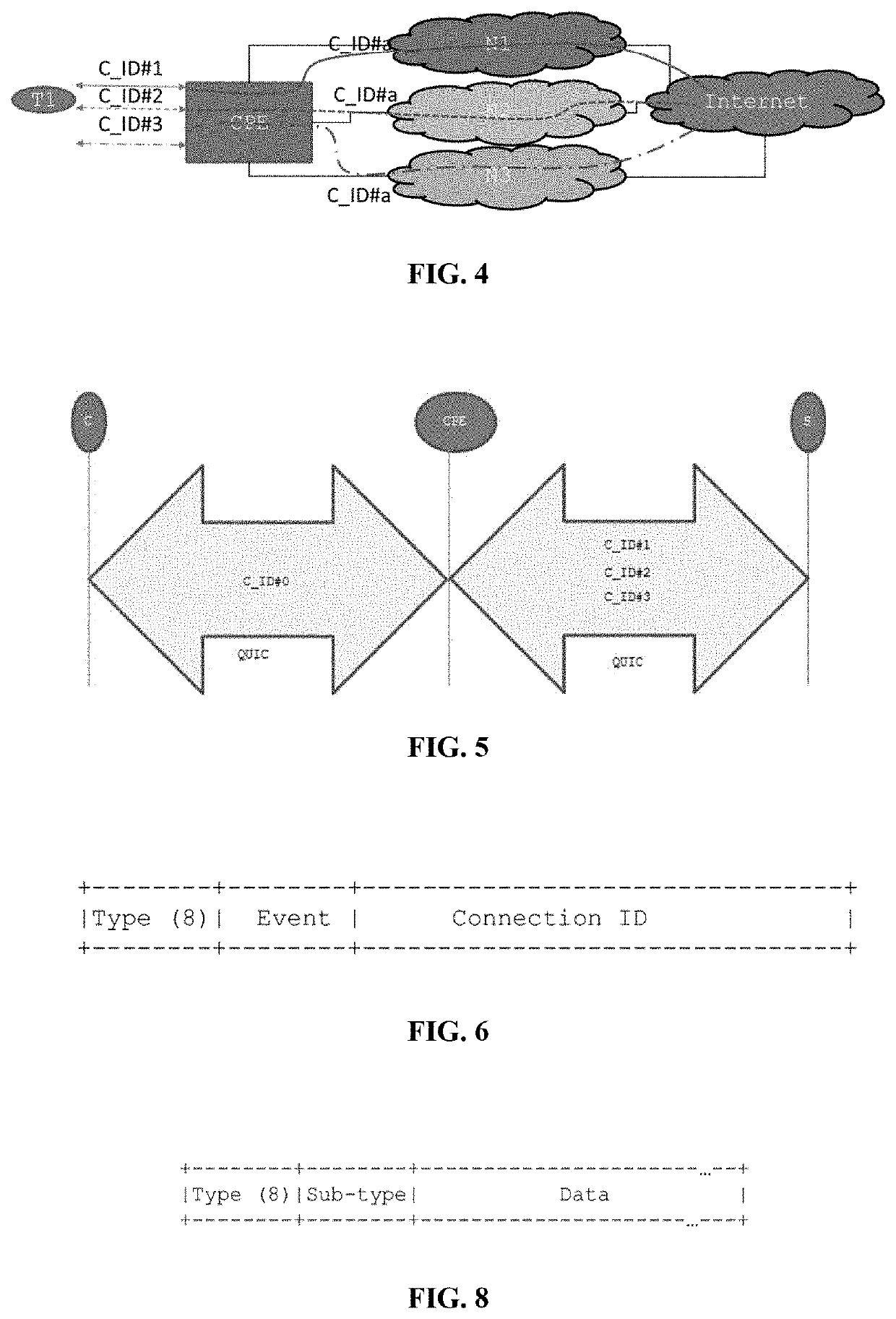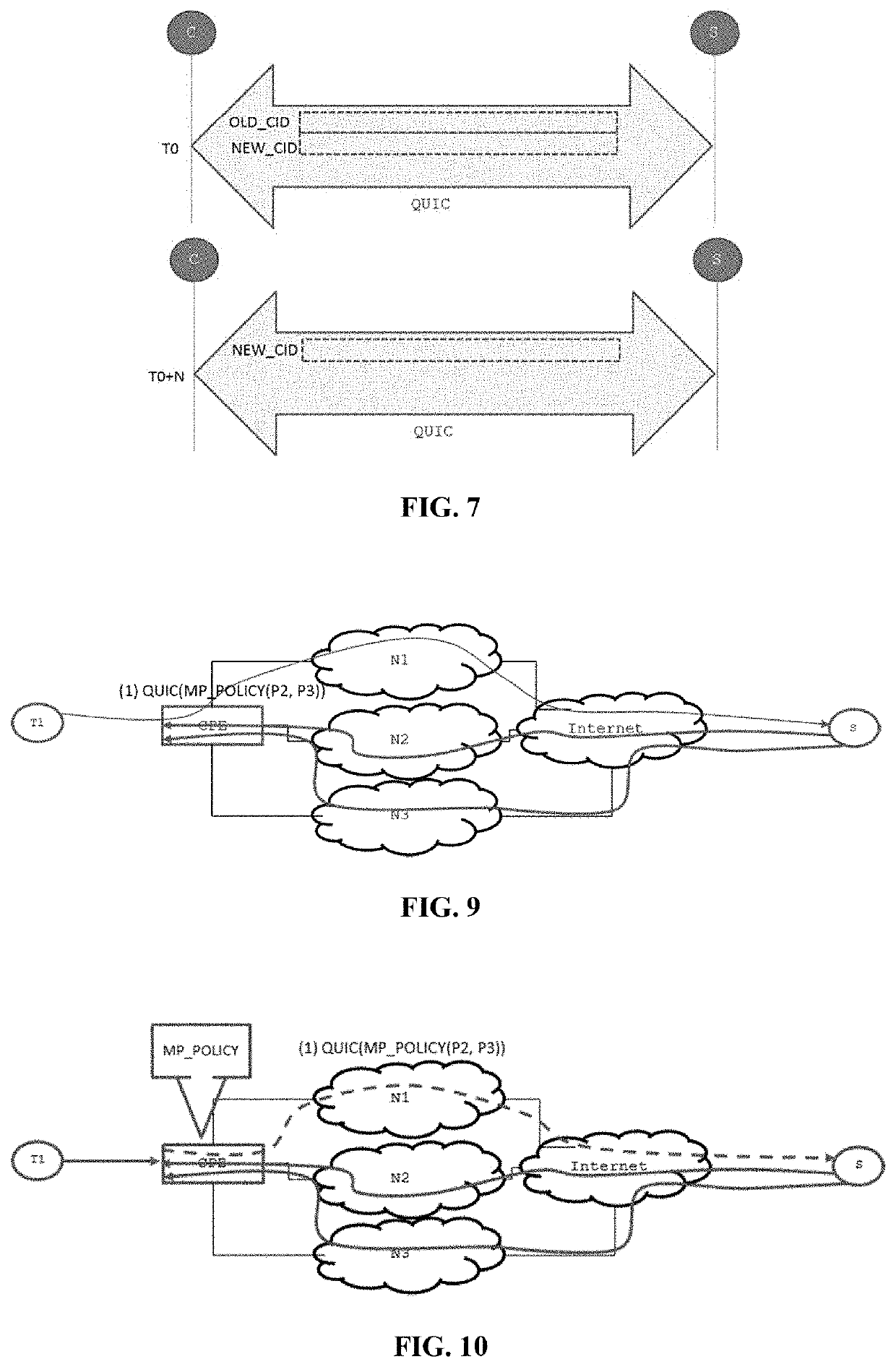Method of quic communication via multiple paths
- Summary
- Abstract
- Description
- Claims
- Application Information
AI Technical Summary
Benefits of technology
Problems solved by technology
Method used
Image
Examples
first embodiment
[0104] a terminal T1 is considered that is located behind a CPE and capable of implementing a multiple path discovery procedure. This discovery procedure is represented schematically in FIG. 3.
[0105]To discover the multiple paths known to the CPE in addition to the paths that are locally visible, the terminal T1 can transmit messages, called DISCOVER_PATH( ); such a message can be sent over all or just some active network interfaces of the terminal.
[0106]If multiple paths are known to the CPE, the latter sends a list of the available paths using the primitive ADVERT_PATHS(Pi). A given path Pi can be identified by:[0107]a path index local to the CPE (path identifier), for example, “1”, “2”, “155467”,[0108]an interface index local to the CPE (index interface), for example, “Ifindex1”, “Ifindex2”, “Ifindex15”,[0109]an interface name, for example “cellular”, “adsl”, “fiber”,[0110]an address or an external IP prefix, for example “1.2.3.4” or “2001:db8:: / 56”,[0111]a physical address, for ...
second embodiment
[0131]Consider, for example, according to the invention illustrated in FIG. 5, a client C located behind a CPE. This client C transmits data packets comprising a QUIC connection identifier denoted C_ID #0 generated by the client C.
[0132]Following the reception of the first data packet characteristic of a new communication between the client C and the server S, the CPE puts in place associations between connection identifiers C_ID # i (aliases) and the respective paths Pi, for example by configuring an associations table in a database.
[0133]It will be noted that an alias can be generated by the CPE, but also, as a variant, by the client C or by the server S. For example, if said first packet is received by the CPE from the server S over a path Pi, and this path comprises a connection identifier C_ID # i, the CPE preferably associates this alias C_ID # i with this path Pi.
[0134]It will also be noted that various schemes are possible for the values assigned to the aliases with respect ...
PUM
 Login to View More
Login to View More Abstract
Description
Claims
Application Information
 Login to View More
Login to View More - R&D
- Intellectual Property
- Life Sciences
- Materials
- Tech Scout
- Unparalleled Data Quality
- Higher Quality Content
- 60% Fewer Hallucinations
Browse by: Latest US Patents, China's latest patents, Technical Efficacy Thesaurus, Application Domain, Technology Topic, Popular Technical Reports.
© 2025 PatSnap. All rights reserved.Legal|Privacy policy|Modern Slavery Act Transparency Statement|Sitemap|About US| Contact US: help@patsnap.com



